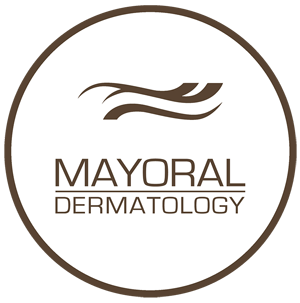Warts are unsightly little nuisances that frequently appear and disappear at random, only to appear again when we least expect it in a more obvious place on the body. Harmless but definitely unattractive, warts develop when the human papillomavirus (HPV) virus sneaks its way into tiny cuts in the skin. The virus frequently infects the soles of the feet and the hands simply because these two surfaces are more likely to encounter moist, warm areas where viruses proliferate, such as wet bathmats, doorknobs and swimming pool concrete.
Although warts are contagious, touching someone else’s wart does not necessarily mean a wart will emerge on your skin in the near future. Unless the virus finds a way to reach your bloodstream through an opening in your skin, the virus cannot infect your skin cells and cause them grow uncontrollably into an ugly, raised wart.
While it is rare to find someone who has never had a wart, some people never get warts, even if they are frequently (and unknowingly) exposed to the virus. Doctors suspect this apparent immunity to the HPV is associated to the immune system and its ability to fight infections. This may be the reason why children, who have immature immune systems, seem more susceptible to warts than adults.
Wart Types
The common wart can appear anywhere on the body and usually resembles a flesh-colored mole but with a rough, scaly texture. When immersed in water until saturated, common warts will soften and turn an off-white shade. Rarely to common warts grow larger than ten millimeters in size and many will suddenly disappear within a year or two of appearing.
Flat warts can be flesh-colored or have a darker, reddish-brown tone that makes them look more like a mole than the common wart. True to their name, flat warts are not as raised as true warts and have a less “warty” surface than the common wart. Flat warts are further recognized by their frequent placement on the face and hands in a linear pattern sometime comprised of four or five flat warts.
Plantar warts are usually found on the soles of the feet and can be painful, unlike common and flat warts that only cause irritation if they are located in places where clothing or excess skin rubs the body. The HPV is also responsible for plantar warts but because these warts develop on the bottom of the feet, the constant pressure forced on them pushes the warts into the foot where they harden and spread throughout the rest of the foot if left untreated.
Caused by different strains of the HPV, genital warts always affect the genital area of men and women and spread primarily through sexual contact. The HPV-6 and HPV-11 types are considered low-risk warts that usually remain benign and non-cancerous. However, women suffering from HPV 16, 31 and 45 are at a high risk of being diagnosed with cervical cancer at some point in the future.
Treatment Options for Warts
People wanting their warts removed can choose between two treatment options–those that “destroy” warts and immune modulating medications such as Candida antigen injections and SADBE (squaric acid dibutylester, which is applied directly to warts).
“Destructive” treatment methods used to remove warts includes cryotherapy and salicylic acid for recalcitrant warts, or warts that grow uncontrollably and are resistant to other treatments. Cryotherapy is a quick, painless method for wart removal and involves freezing the wart by applying drops of liquid nitrogen. The “freezing” of the wart occurs because liquid nitrogen removes the heat in a wart’s cells and transfers it tissues comprising the wart. When skin cells begin to die, the immune system kicks in to provide an inflammatory response, which assists in facilitating destruction of the wart and also clears away dead cells and tissue.
The slowest way to eliminate warts is by using salicylic acid to dissolve the keratin that constitutes the thickness of a wart. Salicylic acid is available as drops, gels or bandaid-like pads and often requires daily applications for up to six weeks before warts disappear.
For Safe Removal of Warts, Contact a Dermatologist
Using over the counter treatment methods for one or two common warts affecting the fingers or hands is safe and usually effective. However, warts growing on sensitive facial skin (on the eyelids, for example), should be treated by a dermatologist to avoid possible skin irritation, hyperpigmentations or infection. Moreover, plantar and genital warts should always receive professional dermatological attention because of their location on the body and potential for more serious health problems involving uncontrollable spreading, increased pain and development of cervical cancer (with genital warts only).
Mayoral Dermatology offers quick and painless wart removal treatment methods to eliminate most types of unattractive and bothersome warts. Call today to schedule an examination of your warts so that one of our specialists can determine which wart removal technique is best suited for the type of warts affecting you.

